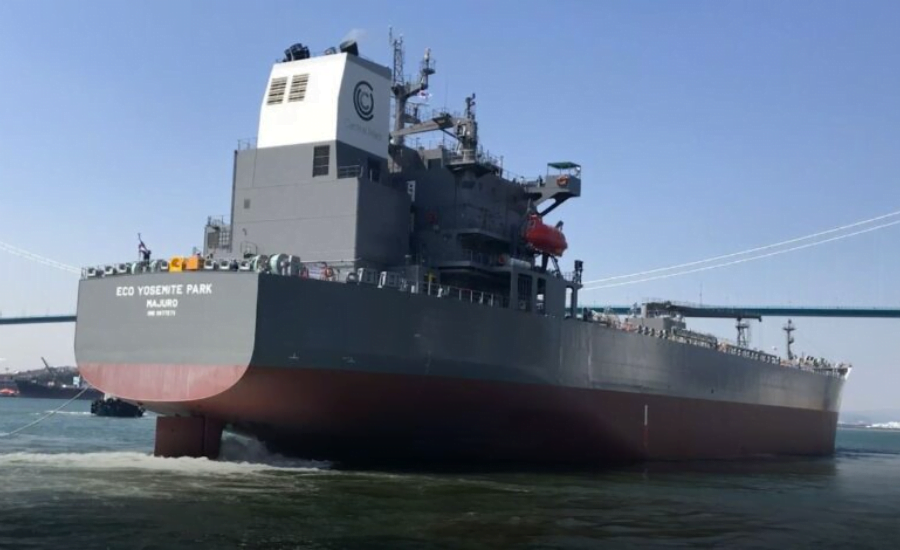
This iconic line from the movie Titanic is so moving that it sends shivers down the spine of anyone. Who has seen the movie? This 1997 film masterpiece brought to life the tragic story of a passenger and Edward John Smith. The ship’s ill-fated journey through the icy waters of the Atlantic Ocean gained a steady cult following.
While Jack and Rose undoubtedly attracted a sizable audience, Captain Smith was truly loved by many. Watching Captain Smith refuse to wear a life jacket. And becoming trapped on the bridge just before the ship tragically sank was a heartbreaking experience for him. Opinions about the achievements of the captain of the Titanic continue to change as legends produce different conclusions about him.
To many, Captain Edward John Smith was a brave leader, but to many others. A series of mistakes and bad decisions, including Edward John Smith. Ultimately led to the tragic fate of RMS Titanic’s maiden voyage. I believe that it has been decided. This continued fascination with Smith highlights the public’s continued interest in the subject.
An Experienced Sailor who Failed his Seafaring Test
Born Edward John in England on January 27, 1850. Smith began his maritime career in his teens, inspired by his half-brother Joseph Hancock, who was a sailor. I did. At the age of 17, Smith was apprenticed to Captain Joseph on the American packet ship Senator Weber. He first took command in 1877, piloting the 1,000-ton merchant ship Lizzie Fennell. In 1887, at the age of 37, Smith married Sarah Eleanor Pennington. And the same year, he became captain of the Liner Republic.
This occasion marked the culmination of my seven years of service with the White Star Line. Which began as a petty officer. However, it is believed that Captain Smith initially failed his first sea trials due to his lack of navigational skills. Nevertheless, Smith passed the next exam and received a captain’s certificate in February 1888. After which he piloted a number of ships.
A Millionaire Captain
Captain Smith, often affectionately known as “E.J.,” was a strong and popular figure among both his crew and passengers. His affable personality made him popular with wealthy travelers, earning him the nickname “The Millionaire Captain.” His years of experience and outstanding reputation made Smith a prime candidate for the nobility of the time.
Smith’s distinguished career in the Royal Naval Reserve (RNR) included notable achievements, retiring as a commanding officer. His partnership with the RNR allowed his ships to fly his RNR blue flag. As opposed to the typical red flag flown by British merchant ships. As commander of the Majestic, Smith played a key role in transporting British troops to the Cape Colony. During the Second Boer War, for which he was awarded the King Edward VII Transport Medal.
Misfortunes in Smith’s Pre-Titan Career
Regarded as a “safe captain,”. Captain Smith was proud of having spent nearly 40 years at sea without a major incident. In a 1907 interview with the New York Press. He claimed that he had “never seen a shipwreck or been shipwrecked. But the report tells a different story. Smith has had his fair share of scrapes and near misses during his maritime career. A notable incident occurred in September 1911 when Titanic’s sister ship, Olympic, collided with the Royal Navy cruiser HMS Hawk, commanded by Smith.
The impact shattered Hawk’s bow, filled two of Olympic’s compartments, and twisted one of her propeller shafts. The Royal Navy blamed White Star, claiming that Olympic’s move caused damage to naval ships. There was also an accident on the departure of the Titanic. As they passed the anchored passenger ships New York and Oceanic during a traffic jam caused by a coal strike, the Titanic’s enormous size and the resulting undertow tore apart New York’s line, narrowly avoiding a collision, and the Titanic crashed. There was a time delay.
Absence at Titanic Collision
On Sunday, April 14, 1912, at 4:444 p.m., the Titanic collided with an iceberg while Captain Smith was not on her bridge, and Captain Smith was absent at this critical moment; more precise locations and activities remained. Mystery. Captain Smith reportedly handed over the bridge to Second Officer Lightoller at 21:44:30 and said, “I’m just going to go inside.
Immediately after the collision, Captain Smith returned to the bridge and threw down despite multiple warnings that an obstruction might be present about his absence. On the day of departure, Captain Edward Smith received a report of a sunken shipwreck mast in the Atlantic Ocean. At 19:30, the Titanic had received five warnings from nearby ships about heavy ice floes and numerous icebergs on her way. These facts give rise to speculation that a more experienced captain could have prevented the collision.
However, the report suggests that Marconi’s cell phone operator, Jack Phillips, may have been too busy relaying personal messages from passengers to relay the iceberg warning to officials. It also suggests something. Furthermore, Cooper, author of Captain Titanic: The Life of Edward John Smith, argues that ice warnings were essentially notifications from other ships that they had encountered ice in a particular area; I suspected that the captain did not respond to the ice warning.
The Captain’s Bad Decisions in the Titanic Tragedy
In preparation for her launch, Titanic was hailed as “unsinkable,” but her fate met her on her first voyage across the Atlantic. Many reports claim that poor judgment by Captain Smith and other crew members before and after the incident exacerbated the severity of the incident. A US Senate and British Shipwreck Commission investigation into the accident found that overconfidence and lack of leadership were among the causes of one of the greatest disasters in maritime history.
Until the year before the Titanic accident, Edward John Smith’s experience had been limited to ships under 24,000 tons, but the Titanic and her sister Olympic were her 45,000-ton vessels. This was noticed. Captain Smith believes that, based on her previous experience, the Titanic is able to establish visual contact with the iceberg ahead of the ship and make the necessary maneuvers to avoid the iceberg. I believed that. Senator William Alden Smith, chairman of the Senate Investigations Committee, reportedly claimed that Edward John Smith’s indifference to the dangers directly contributed to this needless tragedy.
Was it Smith’s Fault for Speeding During the Accident?
On the night the Titanic sank, many other ships decided to shut down their engines in the icy waters of the Atlantic Ocean with limited visibility. In contrast, the Titanic’s captain was able to bring her ship up to a top speed of 21 knots, keeping her engines running at full speed.
Numerous investigations into this tragedy have found that the reckless speed made it extremely difficult to maneuver the ship when it spotted the approaching iceberg, ultimately endangering the safety of the passengers. The person at the helm was accused of doing so.
There are also persistent rumors that Captain Smith is the scapegoat for White Star Line managing director Bruce Ismay’s ambitious plans to secure victory in the transatlantic passenger competition, which involves a six-day crossing. This suggests that it may have become.
Conversely, the ship’s rapidly declining coal supplies, exacerbated by the British coal strike, may have forced the captain to conserve fuel by avoiding frequent stops and starts on ice. , conflicting reports suggest.
Suspicions of the Titanic’s Drunken Captain
As already mentioned, questions regarding the whereabouts of the captain at the time of the accident remain open to many. Some claim that Captain Smith had a formal dinner in the ship’s first-rate restaurant on the night of the accident and then returned to his cabin for the night. However, recently discovered documents suggest the captain may have been drunk when the liner hit the iceberg.
A survivor named Emily Richards reportedly claimed to have seen Captain Smith drinking in the ship’s tavern shortly before the accident. In support of this claim, historians who investigated the events aboard the ship after the iceberg sighting noted that Smith showed signs of confusion and daze, as if in a state of shock.
Edward Smith’s The Mystery of Multiple Deaths
The Titanic’s final fall into the ocean occurred at 2:20 am on April 15, nearly three hours after the ship hit the iceberg. According to some reliable reports, the captain sank with the ship, and his body was never recovered. However, Edward John Smith’s final moments are as vividly described as for someone who has experienced as much death as him. Some people said they saw him jump off the ship, be swept away by the waves, and then sucked into the sea through the chimney of the last remaining ship.
Some early reports even suggested that the captain shot himself shortly before the ship sank. According to Titanic firefighter Harry Sr., Smith jumped overboard with her infant still in his arms. He swam to a nearby lifeboat, handed over the child, and swam back, declaring, “I will follow the ship.
Edward John Smith’s Survival Tales from The Disaster
Three months after the Titanic’s tragic accident, a man from Baltimore named Peter Prial made a remarkable claim. He claimed to have seen Captain Smith twice on the streets of the city. Prial went on to claim that he had served as a crew member on the White Star liner Majestic during Smith’s time as captain and that he had spoken to him during these chance encounters. Apparently, Captain Smith bid him farewell with the words, “Good luck, seaman, until we meet again.
“In a strange twist, a letter published in Life magazine in 1940 added a new layer to the mystery. This letter indicated that the captain spent his last years as a homeless old man in Lima, Ohio. The man, who arrived in Lima three years after the Titanic disaster, was nicknamed “Silent Smith.”
Remarkably, he bore a striking physical resemblance to the ill-fated Captain Smith and sported tattoos common among experienced sailors.
Was Captain Smith Planning to Retire After Titanic’s Maiden Voyage?
Another famous story about Captain Smith revolves around the idea that the Titanic’s maiden voyage would be its last before retirement. Among the various anecdotes about the captain, the idea that he wanted to retire after Titanic’s maiden voyage persists, giving the tragedy a painful twist. Some point to a report in the New York Times stating that Captain Smith had reached an advanced age and would retire at the end of 1911 as strong evidence for this theory.
Some historians have also suggested that Smith may have withdrawn from the White Star Line after Titanic’s maiden voyage as a gesture of gratitude. However, another report in 1912 refuted this assumption, stating that Captain Smith would remain in command until Titanic had built a “larger and better steamship” and that Titanic’s first voyage was retired. After that, Captain Smith indicated that he would not be on board.










